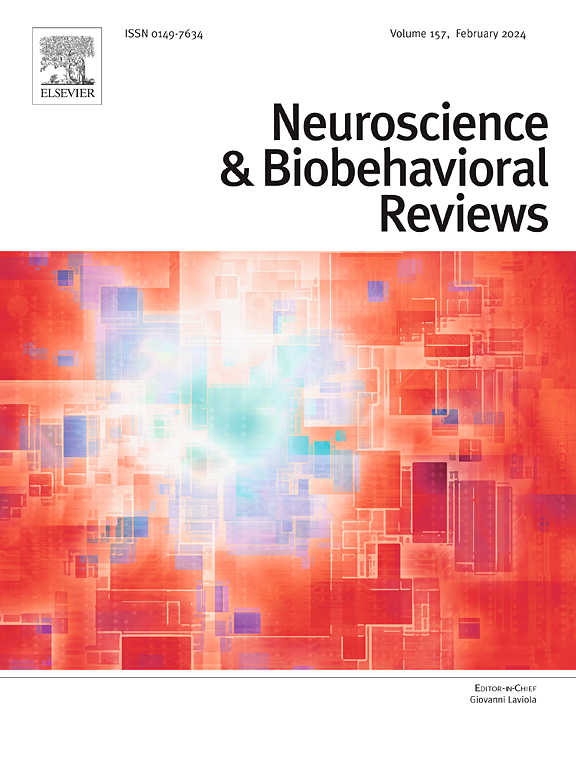Translational cross-species evidence of heart-related dynamics in threat learning
IF 7.9
1区 医学
Q1 BEHAVIORAL SCIENCES
引用次数: 0
Abstract
Fear engenders a vast array of autonomic responses in organisms, which are elicited by the presence of threat. Among these responses, heart rate is influenced by the presence of dangerous events as well but can be modulated based on environmental and internal circumstances. This process, while present across different species, may be subtended by partially different neural mechanisms. Here, we outline a perspective regarding the similarities between human and rodent evidence, which suggests the role of the prefrontal cortex and the insula as central hubs in the modulation of threat responses. However, current disparities between human and animal research preclude drawing definitive parallels, motivating further research with sophisticated neuroimaging and in vivo calcium imaging. Finally, clarifying the cross-species convergence of autonomic regulation may help refine translational models of anxiety and its treatment. Thus, we provide a conceptual framework to bridge cross-species differences and summarize the key brain areas underlying threat-induced autonomic changes, with emphasis on their translational relevance for psychopathology.
威胁学习中心脏相关动力学的跨物种证据
恐惧在生物体中产生了大量的自主反应,这些反应是由威胁的存在引起的。在这些反应中,心率也受到危险事件的影响,但可以根据环境和内部情况进行调节。这一过程虽然存在于不同的物种中,但可能由部分不同的神经机制支持。在这里,我们概述了一个关于人类和啮齿动物证据之间相似性的观点,这表明前额叶皮层和脑岛在调节威胁反应中起着中心枢纽的作用。然而,目前人类和动物研究之间的差异阻碍了得出明确的相似之处,这促使人们进一步研究复杂的神经成像和体内钙成像。最后,阐明自主调节的跨物种趋同可能有助于完善焦虑及其治疗的翻译模型。因此,我们提供了一个概念框架来弥合跨物种差异,并总结了威胁诱导的自主神经变化背后的关键大脑区域,重点是它们与精神病理学的翻译相关性。
本文章由计算机程序翻译,如有差异,请以英文原文为准。
求助全文
约1分钟内获得全文
求助全文
来源期刊
CiteScore
14.20
自引率
3.70%
发文量
466
审稿时长
6 months
期刊介绍:
The official journal of the International Behavioral Neuroscience Society publishes original and significant review articles that explore the intersection between neuroscience and the study of psychological processes and behavior. The journal also welcomes articles that primarily focus on psychological processes and behavior, as long as they have relevance to one or more areas of neuroscience.

 求助内容:
求助内容: 应助结果提醒方式:
应助结果提醒方式:


